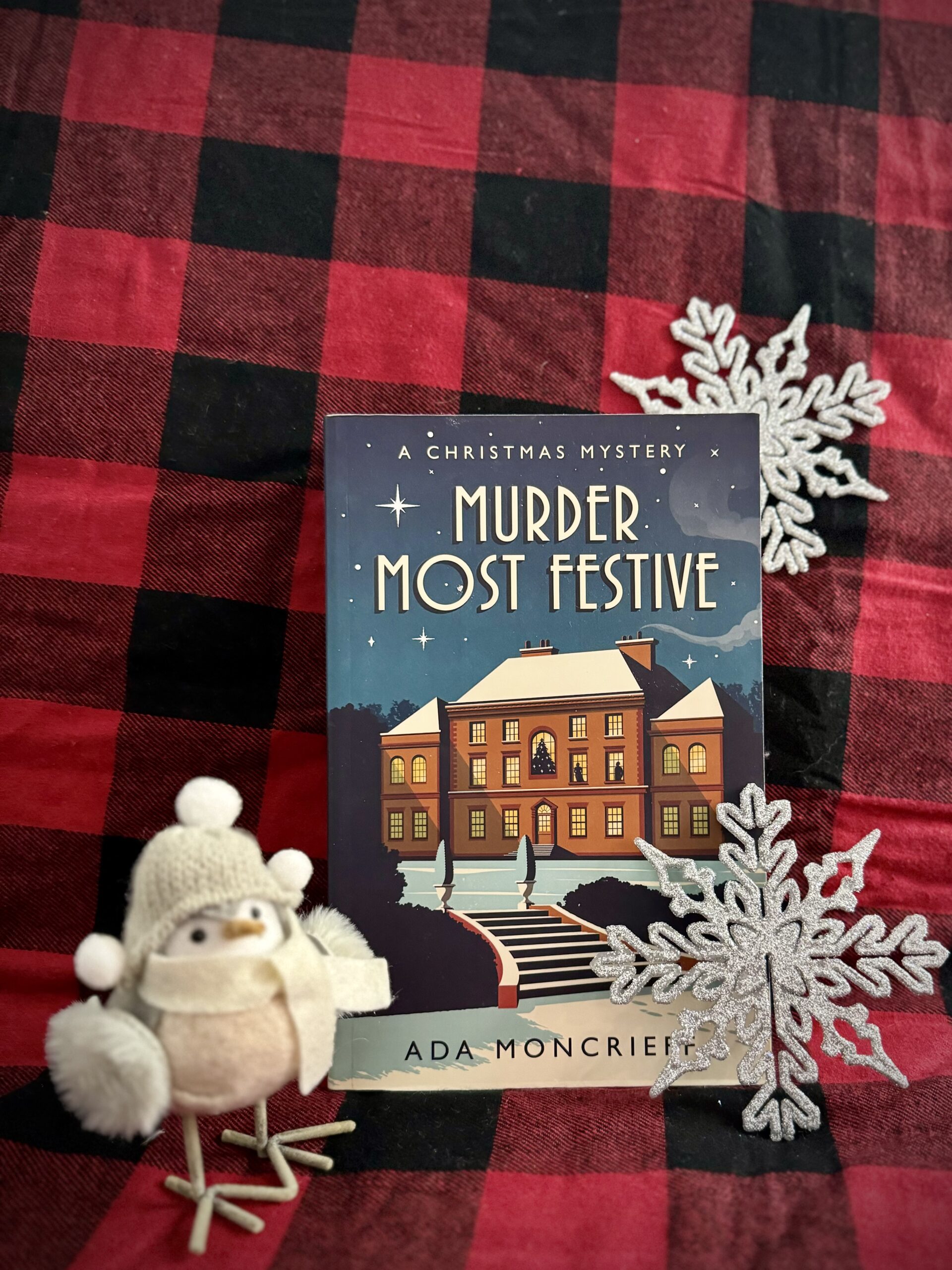We are moving away from the dark and shocking side of holiday crime into lighter fare. We’ll start with three days of Ada Moncrieff, a modern writer with a taste for the historical. The first in her holiday mysteries is Murder Most Festive, an homage to the classic Manor House Mystery genre.
Murder Most Festive tells the story of a British WWII-era Christmas at a country manor. The family (and friends and other guests) have gathered for their annual Christmas celebration – when one of them wakes up dead in the snow. The police seem – inept at best, and so it’s up to amateur sleuth and family friend Hugh Galveston to investigate.
A branching investigation
If I had one word to describe Galveston’s mystery-solving approach, I would use “branching”. This doesn’t have to be a bad thing – there’s something fun to the idea of testing hypotheses and pruning them – but I wasn’t able to really crystallize the logic of the investigation as I read. There were easily six or seven threads to follow, and given that the narrative bounced around between threads and narrators, it became very easy to lose one’s place.
All that, and I think it’s still not technically a fair-play mystery. That said, I guessed the killer early on, which was a bit of a disappointment. (To be fair, I guessed it after reading over 15 Christmas murder mysteries in one year, so that may be more of a “me” problem…) It all felt technically… fine, but not particularly exciting. This, for me, is the cozy you read to get yourself back in the groove.
Classic Christmas tension
The mystery structure isn’t the only element Murder Most Festive borrows from its predecessors. It also lifts the classic holiday tension of the Christmas mystery genre – a murderous family event usually means a murderous family. And if you need both a murdered family member and multiple viable suspects, usually that means you need pretty unpleasant principals.
I ran into this problem with The Santa Klaus Murder last year. No number of seasonal festivities and holiday feasts makes up for the hours spent with selfish or rude characters, most of whom the protagonist must save. Based on her other works, I don’t think Moncrieff is trying to pull a Cyril Hare and write a story lampooning the British upper crust. (Or if she is – it would be nice to see a sharper satire, one with more of a point.) So you’re just left with sparkly sourness – not my ideal Christmas treat.
Reader’s notes and rating: 🎁 🎁 🎀
I wanted to love Murder Most Festive, I truly did. But it picks up on the best and worst of the genre it tries to emulate. You’ve got all the trappings of Christmas, but also a family full of seething hatred for each other. And the mystery is not technically solvable (I think) textually, though meta-textually, I found it rather easy to guess what would happen. This is a nice fast read to pass your holiday season, but not one to revisit more than once.
One other note – because it sticks out so much here – this book can best be described as “overwritten”. At many points the language tries a bit too hard to be old-timey, instead jarring me out of the writing. The best Golden Age writing is timeless, not focused on the specific slang or multi-syllabic turns of phrase, and it can take a bit of getting used to as a reader.
2.5 Christmas presents.
Tomorrow we go back to the well with Murder at the Theatre Royale – same author, but different protagonist and setup. Until then, stay cozy and stay curious!

2 responses to “Advent of Mystery, Day 7: Murder Most Festive”
[…] Murder Most Festive, this story wants to be an homage to the Golden Age. But there’s not quite enough meat on the […]
[…] the best of many worlds – you’ve got the closed circle and the country house setting, as in Murder Most Festive. But because this is a party with invitations, no miserable family who hate each […]